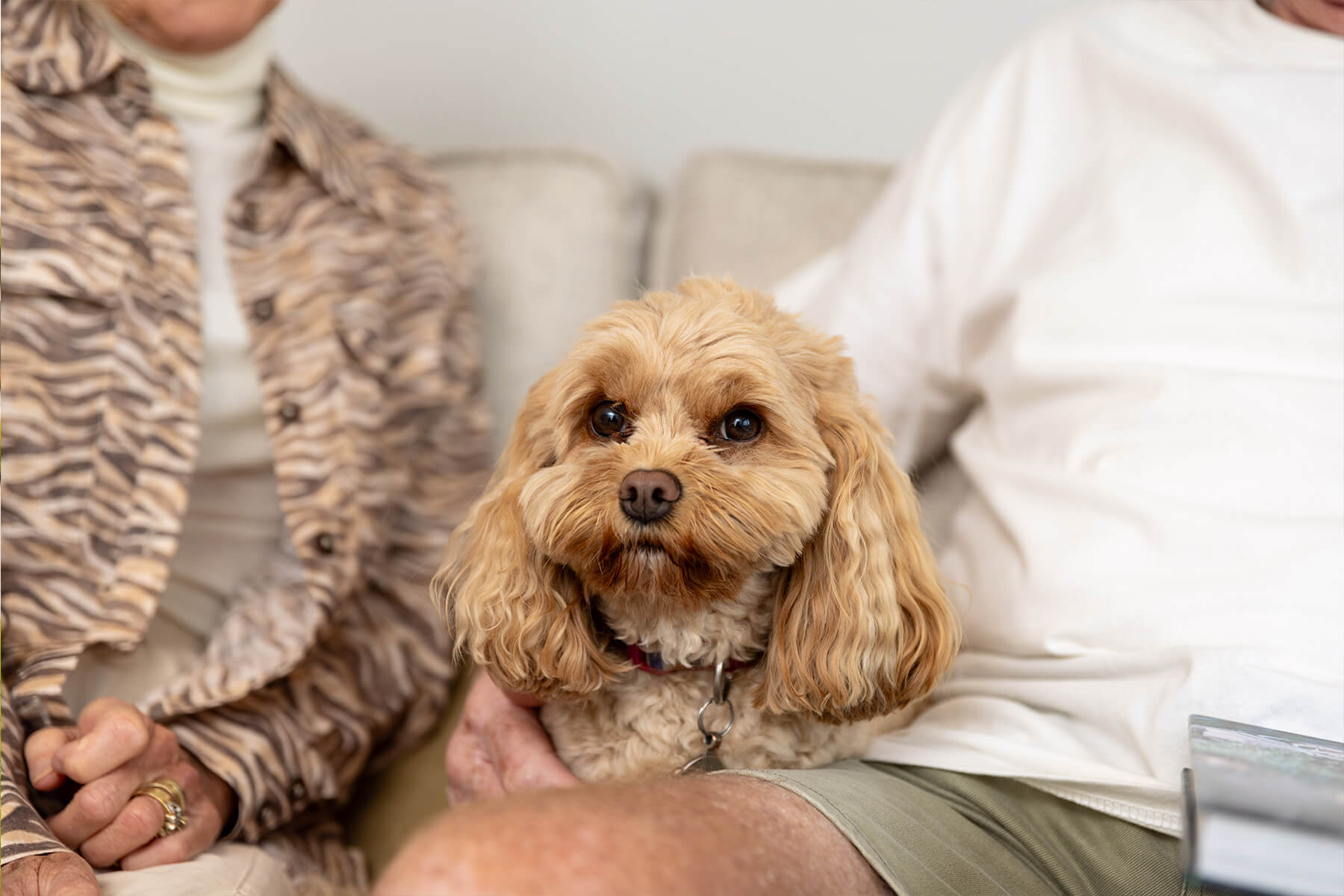Tips for moving to a pet friendly retirement village
Tips for moving to a pet friendly retirement village

Moving to a retirement village can open the door to a new stage of your life that’s rich in opportunity. However, if you have pets, you may be concerned what this means for them and wondering, can you have pets in retirement villages? Naturally, you want to share this journey with your beloved furry friend and at Ryman, you’re welcome to bring your pet if they are suitable.
Once your pet’s been approved, it’s just a matter of managing their move. Dogs and cats are creatures of habit and we understand moving house can be stressful for them. However, with patience and a few clever strategies, you can make this next stage of your lives together easier on them. Here’s how to make your move as seamless as possible:
1. Preparing for the move
Prepare your pets to move to a retirement village in advance. Do this by familiarising them with:
- Packing items: Gradually familiarise them with packing items such as empty moving boxes and animal crates. This can help them feel less anxious when these new objects come out during the move.- The new village and surrounding area: If you have a dog, try to take them for a short walk around their new suburb and home prior to moving if possible. Let them explore and become familiar with the space.
Another important thing to remember is to get your pet’s registration and microchip information updated with your new address and contact information.
2. Keeping calm on moving day
You may want to have your pet stay with a friend or relative for the day. You could also keep them in another room, or crate, away from the activity of the big day. This should reduce stress and the risk of them escaping.
3. Maintaining your pet’s routine
Stay consistent with routine, such as feeding times and walking schedules both during and after the move – consistency can help reduce their stress.

4. Having treats on hand
Once you have moved into a pet friendly retirement village, consider bringing along some special treats for them to have at your new home. This helps ease their anxiety and build a positive connection to the new environment. Try hiding treats around their new space to discover and keep them busy.
5. Slowly settle your pet into retirement living
Once everything has been moved, slowly introduce your pet to its new surroundings by:
- Setting up a designated space with your pet’s belongings such as their bed, toys, and blankets. This provides them with comfort and security in the familiar.
- Avoiding freshly washing their bed or blankets. This is because their scent on these is a big source of comfort.
- Introducing them to their new surroundings one room at a time so the space feels less daunting.
Tips for moving with cats
It’s recommended to avoid giving cats access to the outdoors for at least two weeks because they might try to wander back to their old home and surroundings. Cats typically adjust to their new surroundings after a fortnight, although every cat is different.
Tips for moving with dogs
Be sure to check your new home is fully fenced without any hidden gaps before letting them explore the outdoors at our dog friendly retirement villages. Allow them to sniff around the retirement community to get familiar with all the new sounds and smells.
Keeping these tips in mind for the four-legged member of your family can help them settle into the retirement village quickly and make a lot of new friends to fuss over them.
Reach out to our team to find out more about how we can support you and your pet’s move to one of our vibrant villages. Click here to get in touch with our friendly staff.
by Christine McCurdy | Apr 17, 2024
Subscribe to our blog newsletter
You May Also Like
These Related Stories

Maintaining independence as we age: A guide for families and caregivers

Find a Retirement Village in New Zealand

